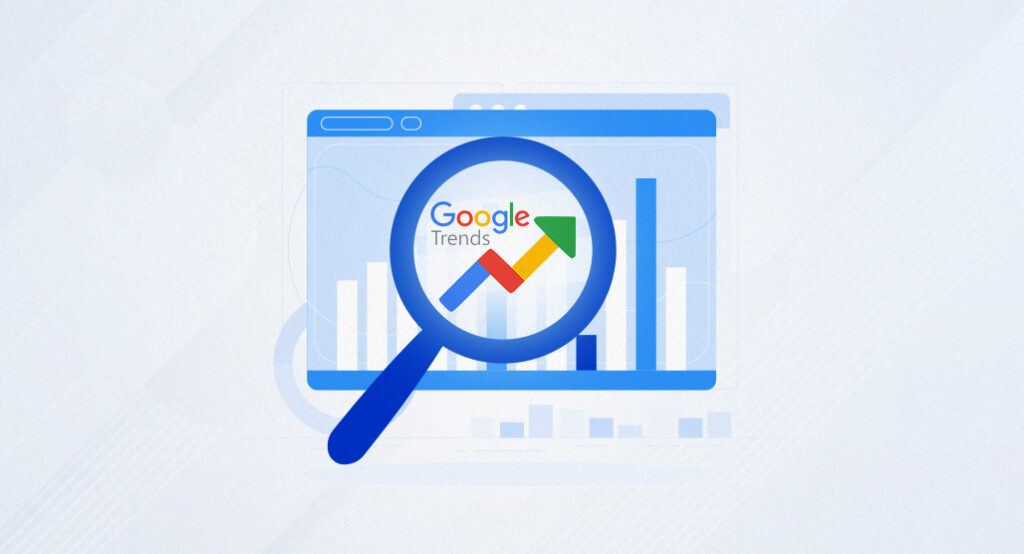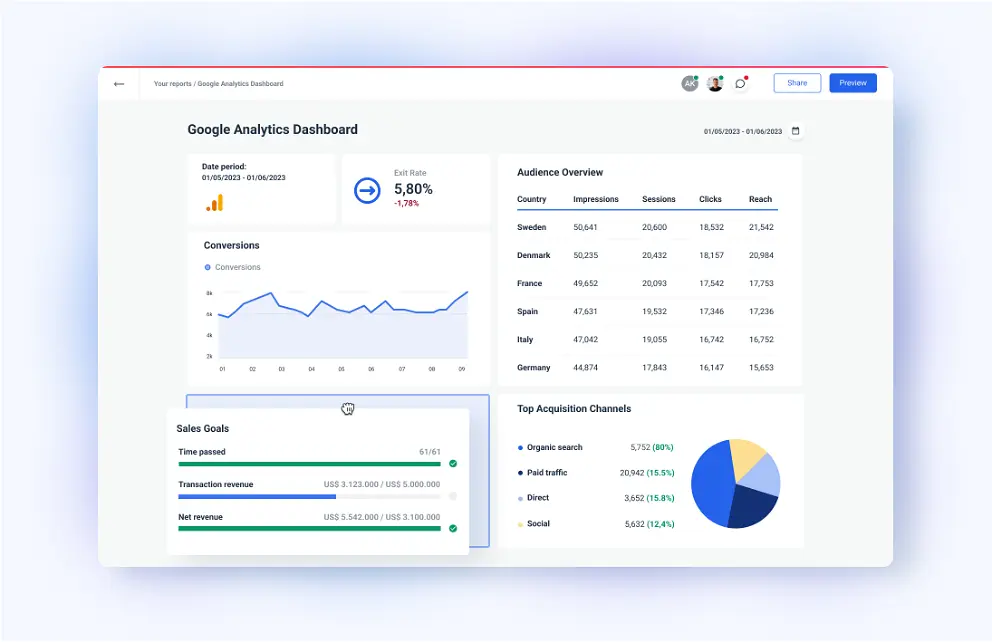Uncovering Consumer Demand: Using Google Trends to Identify Market Opportunities
How to Use Google Trends for Market Research
Google Trends is a powerful tool that can provide valuable insights into consumer demand and market trends. By analyzing search volume data, businesses can identify emerging opportunities, understand customer preferences, and make informed decisions.
Identifying Market Opportunities
Google Trends can help businesses identify potential market opportunities by revealing popular search queries related to their products or services. For example, a clothing retailer might discover a surge in searches for “sustainable fashion” or “eco-friendly clothing.” This information can guide product development and marketing strategies.
Understanding Customer Preferences
By analyzing search trends over time, businesses can gain insights into customer preferences and behavior. For instance, a travel agency might observe a seasonal increase in searches for “beach vacations” during summer months. This knowledge can help them tailor their offerings and promotions accordingly.
Monitoring Competition
Google Trends can also be used to monitor the competitive landscape. By tracking search volume for competitors’ brands or products, businesses can assess their market share and identify areas for improvement. This information can inform marketing campaigns and competitive strategies.
How to Use Google Trends
To use Google Trends effectively, follow these steps:
- Define your search terms: Identify the keywords or phrases relevant to your business.
- Set the time period: Choose a time frame that aligns with your research objectives.
- Select the region: Specify the geographic location you want to analyze.
- Analyze the data: Examine the search volume trends and identify patterns or insights.
- Interpret the results: Draw conclusions based on the data and consider its implications for your business.
Tips for Effective Use
- Use specific keywords: Focus on relevant and specific search terms to obtain accurate results.
- Consider seasonality: Be aware of seasonal fluctuations in search volume.
- Compare multiple terms: Analyze trends for different keywords to gain a comprehensive understanding.
- Use filters: Filter results by category, time period, or region to refine your analysis.
- Monitor trends regularly: Track search volume over time to identify emerging opportunities or changes in demand.
By leveraging Google Trends for market research, businesses can gain valuable insights into consumer behavior, identify market opportunities, and make informed decisions that drive growth and success.
Keyword Analysis: Optimizing Your Content Strategy with Google Trends
How to Use Google Trends for Market Research
Google Trends is a powerful tool that can provide valuable insights into search trends and consumer behavior. By leveraging this data, businesses can optimize their content strategy and make informed decisions about their marketing efforts.
Understanding Google Trends
Google Trends tracks the popularity of search terms over time, allowing you to identify trends, compare keywords, and explore seasonal patterns. The data is presented in a graph that shows the relative search volume for a given term, with 100 representing the peak popularity.
Identifying Market Trends
Google Trends can help you identify emerging trends and shifts in consumer demand. By monitoring search volume for relevant keywords, you can stay ahead of the curve and adjust your content strategy accordingly. For example, if you notice a surge in searches for “sustainable fashion,” you can create content that addresses this growing interest.
Comparing Keywords
Google Trends allows you to compare multiple keywords to determine their relative popularity and search volume. This information can help you prioritize keywords for your content and optimize your website for the most relevant terms. By comparing “SEO” and “content marketing,” you can determine which keyword has higher search volume and tailor your content accordingly.
Exploring Seasonal Patterns
Google Trends can reveal seasonal patterns in search behavior. This information can be used to plan content that aligns with consumer demand. For instance, if you notice a spike in searches for “holiday gifts” during the holiday season, you can create gift guides and promotional content to capitalize on this trend.
Geographic Targeting
Google Trends allows you to filter data by geographic location, providing insights into regional search trends. This information can be valuable for businesses targeting specific markets or expanding into new territories. By analyzing search volume for “coffee shops” in different cities, you can identify potential locations for your business.
Integrating Google Trends into Your Content Strategy
To effectively integrate Google Trends into your content strategy, consider the following steps:
- Identify relevant keywords: Use Google Trends to identify keywords that are relevant to your business and target audience.
- Monitor search trends: Track the popularity of these keywords over time to stay informed about emerging trends and shifts in consumer demand.
- Create targeted content: Develop content that addresses the search trends you identify. Use relevant keywords and provide valuable information that meets the needs of your audience.
- Optimize your website: Use Google Trends data to optimize your website for the most relevant keywords. This will improve your search engine rankings and increase visibility for your content.
By leveraging Google Trends for market research, businesses can gain valuable insights into consumer behavior, identify emerging trends, and optimize their content strategy to drive traffic and achieve marketing goals.
Competitive Intelligence: Monitoring Industry Trends and Benchmarking Competitors
How to Use Google Trends for Market Research
Google Trends is a powerful tool for market researchers, providing insights into search trends and consumer behavior. By leveraging its vast database of search queries, businesses can gain valuable information to inform their marketing strategies and stay ahead of the competition.
Understanding Google Trends
Google Trends measures the relative popularity of search terms over time. It presents data as a graph, with the y-axis representing search volume and the x-axis representing time. The data can be filtered by region, category, and time period.
Identifying Market Trends
Google Trends can help identify emerging trends and shifts in consumer demand. By tracking search volume for relevant keywords, businesses can spot patterns and anticipate future market needs. For example, a surge in searches for “electric vehicles” could indicate a growing interest in sustainable transportation.
Analyzing Competitor Performance
Google Trends allows businesses to compare their search performance with that of their competitors. By entering multiple search terms, researchers can see how their brand’s visibility compares to others in the industry. This information can help identify areas for improvement and inform competitive strategies.
Understanding Consumer Behavior
Google Trends provides insights into consumer behavior by revealing what people are searching for. By analyzing search queries, businesses can understand the interests, needs, and pain points of their target audience. This information can be used to develop targeted marketing campaigns and improve customer experience.
Using Google Trends Effectively
To use Google Trends effectively, consider the following tips:
- Define your research objectives: Determine what specific information you need to gather.
- Choose relevant keywords: Identify keywords that represent your target audience and industry.
- Set appropriate filters: Filter the data by region, category, and time period to focus on relevant results.
- Analyze the data: Interpret the graphs and identify trends, patterns, and insights.
- Combine with other data sources: Supplement Google Trends data with other market research methods to gain a comprehensive understanding.
Conclusion
Google Trends is an invaluable tool for market researchers, providing insights into search trends, consumer behavior, and competitor performance. By leveraging its capabilities, businesses can make informed decisions, stay ahead of the competition, and effectively target their marketing efforts.
Seasonality and Forecasting: Predicting Market Fluctuations with Google Trends
How to Use Google Trends for Market Research
Google Trends is a powerful tool for market researchers seeking to understand seasonal patterns and forecast market fluctuations. By analyzing search volume data, businesses can gain valuable insights into consumer behavior and market trends.
To effectively use Google Trends for market research, it’s crucial to define your research objectives. Determine the specific keywords or topics you want to track, ensuring they align with your business goals. Once your keywords are identified, you can explore the data over various time periods, locations, and categories.
Google Trends provides a visual representation of search volume, allowing you to identify seasonal patterns. By comparing search volume over time, you can determine when demand for your products or services is highest. This information can help you plan marketing campaigns, adjust inventory levels, and optimize pricing strategies accordingly.
Furthermore, Google Trends can reveal emerging trends and shifts in consumer preferences. By analyzing the “Rising Searches” section, you can identify new keywords or topics that are gaining popularity. This knowledge enables you to stay ahead of the curve and adapt your business strategy to meet evolving market demands.
In addition to seasonal patterns, Google Trends can also provide insights into geographic variations. By filtering the data by location, you can identify regions where demand for your products or services is particularly high or low. This information can guide your marketing efforts and help you target specific geographic markets.
To enhance the accuracy of your market research, consider combining Google Trends data with other sources of information. For instance, you can cross-reference search volume data with sales figures or social media trends to gain a more comprehensive understanding of market dynamics.
By leveraging Google Trends effectively, businesses can gain valuable insights into consumer behavior, seasonal patterns, and emerging trends. This information empowers them to make informed decisions, optimize their marketing strategies, and stay competitive in the ever-changing market landscape.
Geographic Targeting: Tailoring Your Marketing Efforts to Specific Regions
How to Use Google Trends for Market Research: Geographic Targeting
Google Trends is a powerful tool for market researchers, providing insights into search trends and consumer behavior across different regions. By leveraging this data, businesses can tailor their marketing efforts to specific geographic locations, ensuring maximum impact and ROI.
Identifying Regional Search Patterns
Google Trends allows you to compare search volume for specific keywords across different regions. This information can reveal regional variations in demand, preferences, and interests. For example, a business selling winter clothing may find that searches for “snow boots” are significantly higher in northern regions during the winter months.
Understanding Regional Demographics
Google Trends also provides demographic data, such as age, gender, and education level, for each region. This information can help businesses tailor their messaging and content to resonate with the specific demographics of their target audience. For instance, a company targeting young professionals in urban areas may use more sophisticated language and focus on career-related topics.
Analyzing Regional Competition
Google Trends can also be used to assess the competitive landscape in different regions. By tracking search volume for keywords related to your products or services, you can identify potential competitors and their market share. This information can help you develop strategies to differentiate your offerings and gain a competitive edge.
Tailoring Marketing Campaigns
Once you have a clear understanding of regional search patterns, demographics, and competition, you can tailor your marketing campaigns accordingly. For example, you may create region-specific landing pages, optimize your website for local search, and run targeted advertising campaigns in areas with high search volume for your keywords.
Monitoring Regional Performance
Google Trends allows you to track the performance of your marketing campaigns over time. By monitoring search volume and other metrics, you can assess the effectiveness of your efforts and make adjustments as needed. This ongoing monitoring ensures that your marketing strategies remain aligned with changing regional trends and consumer behavior.
Conclusion
Google Trends is an invaluable tool for market researchers seeking to tailor their marketing efforts to specific geographic regions. By leveraging its data, businesses can gain insights into regional search patterns, demographics, competition, and campaign performance. This information empowers them to make informed decisions and optimize their marketing strategies for maximum impact in each target region.




